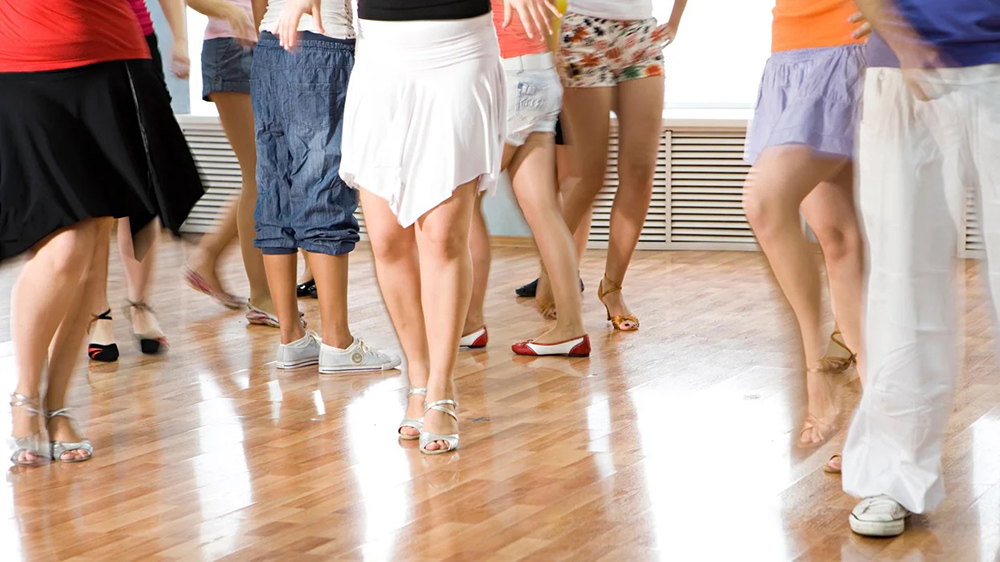By: Cara Murez
Latin dance classes may be a great workout and social outlet, but new research suggests that learning the intricate steps of the salsa, samba and merengue may also improve your memory.
In the study, a Latin dance program was offered to more than 300 Spanish speakers over four years at 12 different sites in Chicago.
After eight months of classes, assessments found significant improvement in participants’ working memory scores. Working memory is a type of short-term memory used to keep small amounts of information in mind while partaking in other cognitive tasks.
“We think it worked for several reasons. More time being spent active, that could be a reason. It could be the different components of the dance program itself,” said study author Susan Aguinaga, who worked on the program from its inception while a graduate student at the University of Illinois in Chicago. She is now a professor of kinesiology and community health at the University of Illinois at Urbana-Champaign.
“It’s an appealing type of physical activity that they want to continue engaging with,” Aguinaga explained. “In general, populations have a hard time maintaining their physical activity levels, but when it’s an activity that they actually enjoy, then they will be more likely to maintain that activity for longer periods of time.”
It could also simply be the music that’s playing, intriguing dance styles or an activity that’s aerobic, which has previously been shown to improve cognitive performance, Aguinaga said.
“The takeaway is definitely finding an activity that is enjoyable, that is appealing. And if dancing is that activity that provides enjoyment and physical activity and social support, then I think this is an activity that should be promoted more,” Aguinaga said.
The study was a randomized, controlled trial that tested BAILAMOS (Balance and Activity in Latinos, Addressing Mobility in Older Adults), which was co-created by study co-author David Marquez, director of the Exercise and Psychology Lab at the University of Illinois, Chicago, and Miguel Mendez, creator and owner of the Dance Academy of Salsa in Illinois. The program includes merengue, salsa, bachata and cha-cha-cha dancing.
In the study, just over 330 Spanish-speaking Hispanic adults were assigned either to twice weekly dance sessions for eight months or to the control group, which had once-weekly health education classes for four months.
The dancers were led by a professional instructor for the first four months, then during the “maintenance phase” were led by participants assigned as “program champions” for their leadership skills and enthusiasm.
While the study found no difference between the groups in cognitive tests at four months, after eight months people in the dance group had better scores.
In dance classes, a person learns several steps and then need to recall those steps the following week and turn them into sequences, Aguinaga explained. Researchers thought the process of recalling steps could target different aspects of memory, but in a fun way.
About 12% of older Hispanics in the United States currently are living with an Alzheimer’s disease diagnoses, the study noted. That number is estimated to increase by 832% by 2060.
“For older Latinos, the thought of promoting dance as exercise is very appealing, given that older Latinos are familiar with dance in some way. They’ve grown up with it, maybe they’ve danced in the past and it’s something that they enjoy,” Aguinaga said. “It might not even be perceived as exercise because it’s a fun activity.”
About 85% of the study participants were women. They had an average age of 65 and their BMI (body mass index) would categorize them as obese.
Program participants reported feeling better overall, making friends and being better able to manage chronic diseases such as high blood pressure and diabetes, Aguinaga said.
A similar program could potentially benefit people of other races and ethnicities if organizers promoted dances and music that was appealing to whatever population they were targeting, she added.
The findings were published recently in Frontiers in Aging Neuroscience.
Dr. Zaldy Tan is medical director of the Jona Goldrich Center for Alzheimer’s and Memory Disorders at Cedars-Sinai Medical Center, in Los Angeles. He said, “I think that’s one of the strengths of the study is that the population studied and intervention were appropriate and consistent,” noting that the program was specific and culturally sensitive. (HealthDayNews.com)





